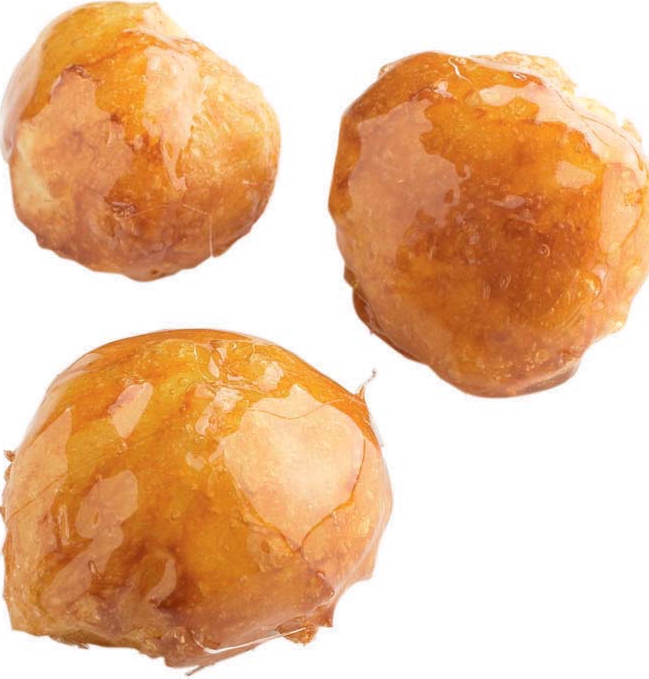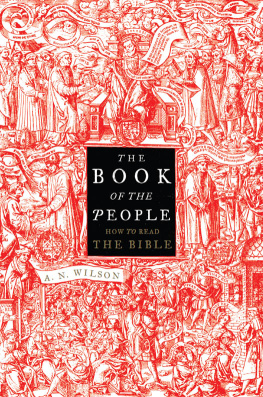THE HARVARD COMMON PRESS
535 Albany Street
Boston, Massachusetts 02118
www.harvardcommonpress.com
Copyright 2012 by Dede Wilson
Photographs copyright 2012 by Joyce Oudkerk-Pool
All rights reserved. No part of this publication may be reproduced or transmitted in any form or by any means, electronic or mechanical, including photocopying, recording, or any information storage or retrieval system, without permission in writing from the publisher.
Printed in China
Printed on acid-free paper
Library of Congress Cataloging-in-Publication Data
Wilson, Dede.
A Bakers field guide to doughnuts : more than 60 warm and fresh homemade treats / Dede Wilson.
p. cm.
ISBN 978-1-55832-788-7 (pbk. : acid-free paper)
1. Doughnuts. I. Title. II. Title: Doughnuts.
TX770.D67W55 2012
641.81'5dc23
2012004602
Special bulk-order discounts are available on this and other Harvard Common Press books. Companies and organizations may purchase books for premiums or resale, or may arrange a custom edition, by contacting the Marketing Director at the address above.
Book design by Night & Day Design
Photographs by Joyce Oudkerk-Pool
Author photograph by David Kilroy
10 9 8 7 6 5 4 3 2 1

To my kidsdaughter, Ravenna, and sons,
Freeman and Forresterwho all share my
fondness for the kitchen and the table.
And to my fans who keep me going.
Come visit me at dedewilson.com and
let me know what you are baking.
Acknowledgments
Thank you to the Harvard Common Press crew for coming up with the perfect topic for the fifth Bakers Field Guide.
Hugs and kisses, as always, to agents Maureen and Eric Lasher, who treat me like family.
Also a huge nod to Pam Hoenig, who launched the Bakers Field Guide series years ago. Working with her again feels like a comforting full circle.

Introduction
Doughnuts or donuts, however you spell this sweet treatthe mere word elicits a passionate response from devotees. A Bakers Field Guide to Doughnuts brings you the recipes and information you need to make airy, yeast-risen doughnuts as well as cakelike baking powder doughnuts in flavors sure to please both kids and adults, whether youre looking for a classic or something new. You will also find doughnuts brethren, such as fritters, churros, and beignets, in all sorts of flavors, shapes, and sizes.
Doughnut history is murky: Some say they were brought to North America by Dutch settlers, while others point to the fact that archaeologists have found remnants of fried ring-shaped cakes in the southwestern United States, suggesting that they were made by early Native Americans. Regardless of their origin, by the 1920s doughnuts were being mass-produced in the United States and had become a standard American treat. The popularity of doughnuts was firmly cemented with the opening of large chains such as Krispy Kreme and Dunkin Donuts in the 40s and 50sin fact, most people have only ever bought their doughnuts, never made them at home.
I hope to change that in A Bakers Field Guide to Doughnuts, as making your own doughnuts requires mastering just a few techniques and will reward you with incredible flavor and texture that you simply wont find in store-bought doughnuts.
How to Use This Book

This book accompanies A Bakers Field Guide to Christmas Cookies, A Bakers Field Guide to Chocolate Chip Cookies, A Bakers Field Guide to Holiday Candy & Confections, and A Bakers Field Guide to Cupcakes. All of these books feature a user-friendly format in which each recipein this case, a doughnutis presented on its own two-page spread. For each doughnut recipe you will find a Description, Field Notes (extra information about the doughnut), Yield (how many doughnuts the recipes makes), and Lifespan (how long the doughnut will stay fresh and how to store it). You will also find symbols for special characteristics, as listed in the following chart:
KEY TO SYMBOLS
 | classic |
 | quick to make |
 | fun to make with kids |
 | extra fancy |
In the Master Recipes section, you will find the recipes for the basic doughs, glazes, frostings, toppings, and fillings used throughout the book. Master these simple recipes and youve got the building blocks for many of the doughnut recipes presented in the Field Guide section. You can even use them to come up with your own flavor combinationssee Combos to Consider on for a few ideas to get you started.
Ingredients
Here is a short list of ingredients that are frequently called for in this book. If you start with high-quality ingredients, youll get better results.
B UTTER : Use fresh unsalted butter.
S UGAR : When a recipe simply calls for sugar, it means regular granulated sugar.
Light and dark brown sugar: These should be firmly packed into exact-size measuring cups.
Confectioners sugar: Also called powdered sugar, this should be sifted before measuring.
Colored sugars, sprinkles/jimmies, and sugar decorations: Whether they are the tiny balls called nonpareils or shaped like bits of confetti, look to cake-decorating supply sources for a variety of choices to enhance your doughnuts.
E GGS : Use eggs graded large.
F LOUR : Various flours are called for in this book; please use the flours suggested. For all-purpose flour, I use King Arthur Unbleached All-Purpose Flour. For cake flour, I use Softasilk.
L EAVENERS
Baking soda and baking powder: Make sure they are fresh. I use doubleacting baking powder.
Yeast: I prefer Red Star active dry yeast. Instant yeast can lessen rising time by as much as 50 percent; feel free to try it in these recipes. In any event, always use yeast before the best if used by date.
Proofing Yeast
The instructions in these recipes are specific to Red Star active dry yeast. If you substitute another brand, you should check that companys recommendations for proofing. Use a thermometer to test your water, which should be between 110 and 115F, then follow the specific instructions in the recipe. If your water is too cool, your doughnuts will have a very slow rise and might never reach their full potential. If your water is too hot, you will kill the yeast. Always use a thermometer and do not rely on touch alone.





















